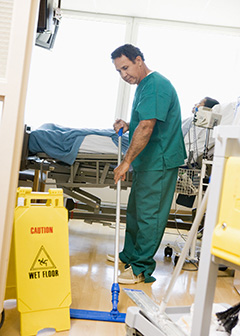Summary
Please enable javascript to play this video.
| Quick Facts: Nursing Assistants and Orderlies | |
|---|---|
|
$39,430 per year
$18.96 per hour |
|
| See How to Become One | |
| None | |
| See How to Become One | |
| 1,495,400 | |
| 2% (Slower than average) | |
| 34,400 | |
What Nursing Assistants and Orderlies Do
Nursing assistants provide basic care and help patients with activities of daily living. Orderlies transport patients and clean treatment areas.
Work Environment
Most nursing assistants and orderlies work in nursing and residential care facilities and in hospitals. They are physically active and may need to help lift or move patients.
How to Become a Nursing Assistant or Orderly
Nursing assistants often need to complete a state-approved education program and pass their state’s competency exam to become licensed or certified. Orderlies typically have at least a high school diploma.
Pay
The median annual wage for nursing assistants was $39,530 in May 2024.
The median annual wage for orderlies was $37,700 in May 2024.
Job Outlook
Overall employment of nursing assistants and orderlies is projected to grow 2 percent from 2024 to 2034, slower than the average for all occupations.
Despite limited employment growth, about 211,800 openings for nursing assistants and orderlies are projected each year, on average, over the decade. Most of those openings are expected to result from the need to replace workers who transfer to different occupations or exit the labor force, such as to retire.
State & Area Data
Explore resources for employment and wages by state and area for nursing assistants and orderlies.
Similar Occupations
Compare the job duties, education, job growth, and pay of nursing assistants and orderlies with similar occupations.
More Information, Including Links to O*NET
Learn more about nursing assistants and orderlies by visiting additional resources, including O*NET, a source on key characteristics of workers and occupations.
 United States Department of Labor
United States Department of Labor











